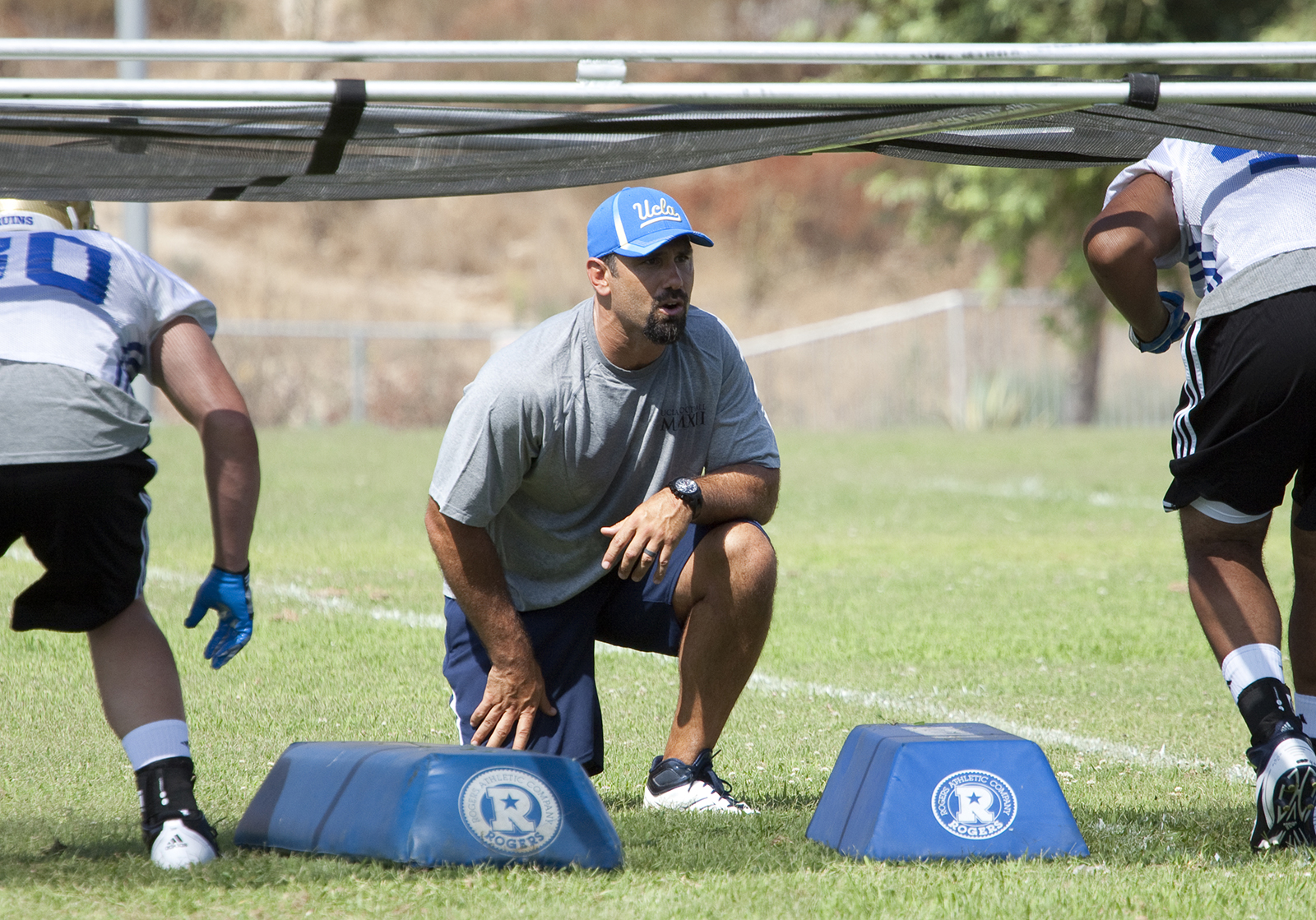UCLA defense seeks to stop high-power Oregon offense

Defensive coordinator Jeff Ulbrich said each player on the No. 18 UCLA defense wanted to make the game-winning tackle against Utah. That desire caused his players to abandon their defensive assignments, which ultimately led to their loss to the Utes. (Daily Bruin file photo)
By Chris Kalra
Oct. 9, 2014 4:42 a.m.
It’s somewhat of a schematic oddity football-wise.
Often on offense, No. 12 Oregon spreads its receivers out along the line of scrimmage, with redshirt junior Marcus Mariota lining up in shotgun and a running back or two alongside him.
Then they run the ball.
With a spread offense, passing is the conventional play call. But over the course of recent history for the Ducks – even with Mariota throwing for over 280 yards per game this season – running the ball, and breaking those runs for big gains, has been their identity.
So how does UCLA stop Oregon’s bread-and-butter?
“The key is just everybody staying in their gap,” said sophomore linebacker Myles Jack of an Oregon offense that averages 209 rushing yards per game. “Whoever has the quarterback has the quarterback, whoever has the running back has the running back.”
It seems simple.
On some level, it is. A player has an assignment – a place he has to be on the field – and he sticks to it.
The tricky part lies in trusting your teammates to stick to their gaps. That way the player can stick to his gap and contain the run, rather than trying to make every play.
Each week in post-practice interviews, going as far back as fall camp, defensive coordinator Jeff Ulbrich and UCLA’s front seven have harped on gap defense. It is, after all, essentially what Ulbrich’s defense is predicated on.
Yet in the heat of the moment, it failed the Bruins.
On Utah’s final drive Saturday, the Utes pounded down nine straight runs, marching 63 yards across the field to kick the eventual game-winning field goal.
So how come gap defense failed?
“Our players just wanted it so badly,” Ulbrich said, alluding to how each player wanted to make every tackle, to be that playmaker.
That ironically led to the team’s fatal wound.
“I think we shot ourselves in the foot with key little details there … it was disappointing,” said redshirt senior defensive end Owamagbe Odighizuwa.
Now UCLA’s defensive roll-over in what was supposed to be a final stand on Saturday night begs the question: How will the Bruin defense respond to a high-tempo, spread-out Ducks’ offense that practically implores defenders to break their gaps?


